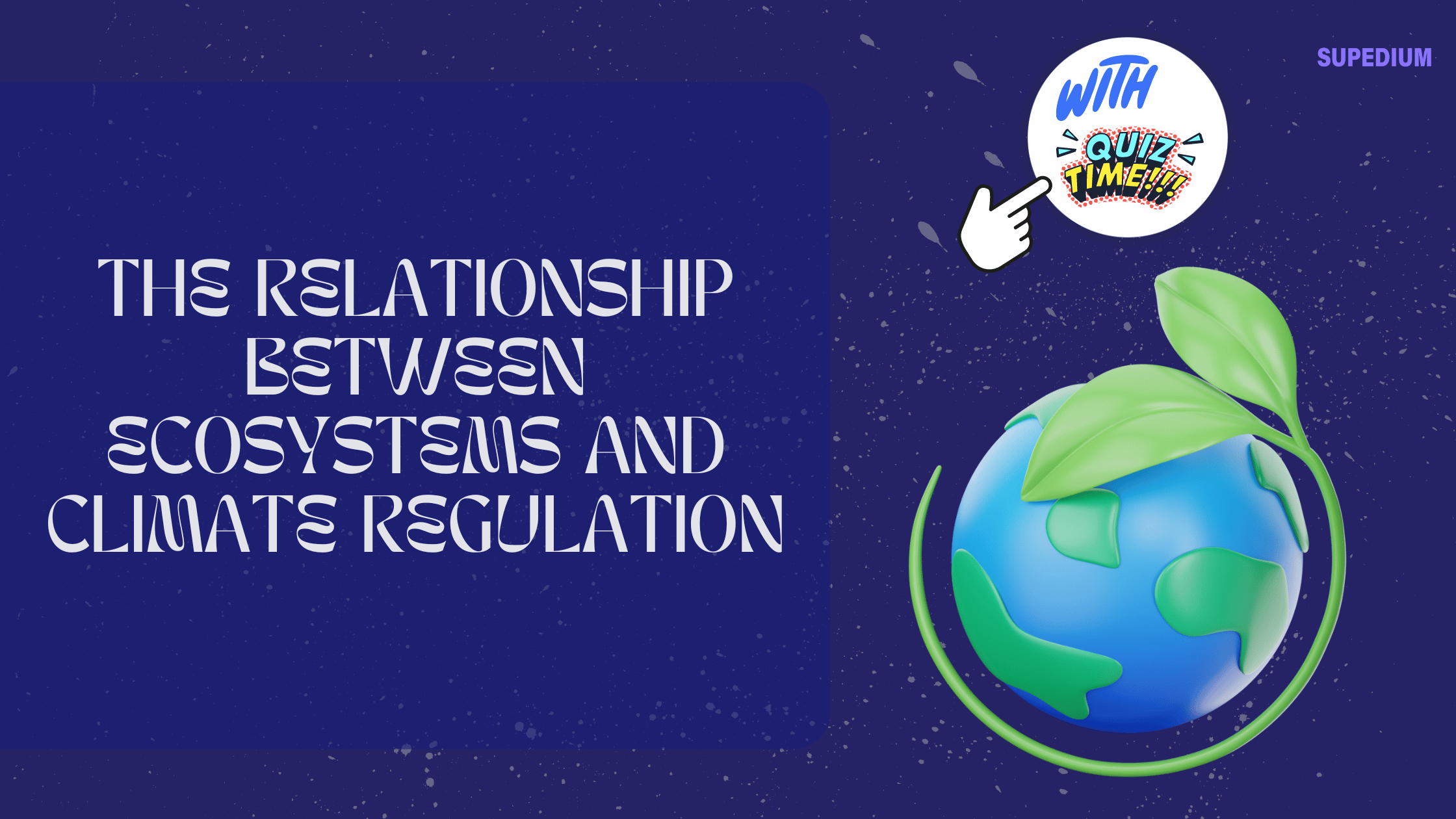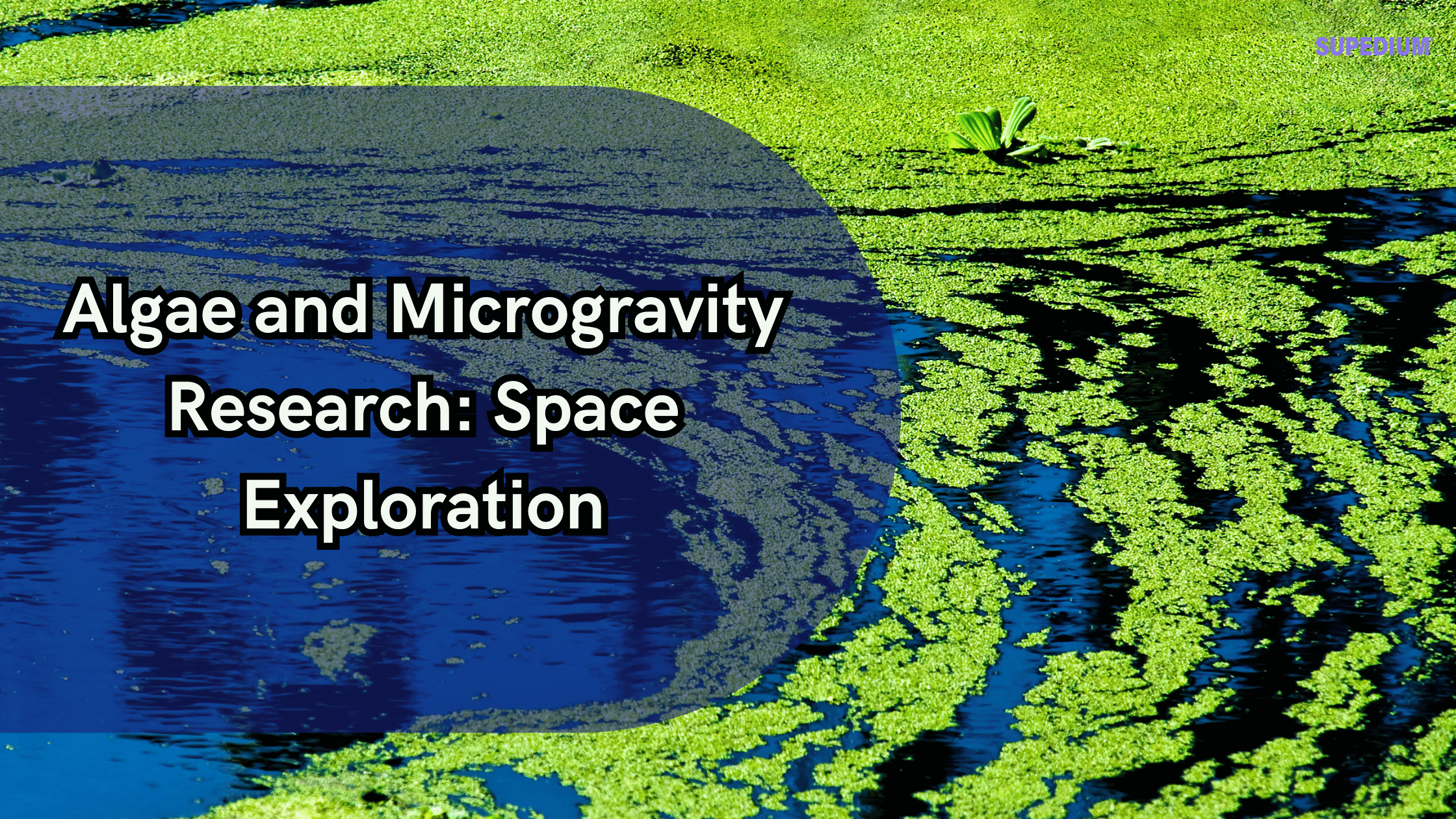Table of Contents
- 0.1 I. Introduction
- 0.2 II. Mechanisms of Ecosystem Influence on Climate Regulation
- 0.3 III. Impact of Climate Change on Ecosystems
- 0.4 IV. Human Activities and Their Effects
- 0.5 V. Strategies for Enhancing Ecosystem-Based Climate Regulation
- 0.6 VI. Future Directions and Research Needs
- 0.7 VII. Conclusion
- 1 Quiz Time
![]()
Understanding the relationship between ecosystems and climate regulation is crucial for addressing the challenges posed by climate change. Ecosystems play a vital role in maintaining the stability of the Earth’s climate by regulating carbon levels, temperature, and water cycles. This article explores how different ecosystems contribute to climate regulation, the impacts of climate change on these ecosystems, and strategies for enhancing their climate-regulating functions.
I. Introduction
Definition of Ecosystems
Ecosystems are complex networks of living organisms, including plants, animals, and microorganisms, interacting with their physical environment (air, water, and soil). These interactions create a dynamic system where energy and nutrients are exchanged. Ecosystems can vary widely, including forests, wetlands, grasslands, and oceans, each providing unique services that contribute to the health of the planet.
Overview of Climate Regulation
Climate regulation refers to the processes through which Earth’s climate system is maintained within a range of temperatures and conditions that support life. It involves various natural mechanisms that control the Earth’s climate, including the regulation of greenhouse gases, temperature, and precipitation patterns. Effective climate regulation is essential for sustaining ecosystems and human societies.
Purpose of the Article
This article aims to explore how ecosystems contribute to climate regulation, the impact of climate change on these ecosystems, and the strategies that can be employed to enhance their role in climate stabilization.
II. Mechanisms of Ecosystem Influence on Climate Regulation
Carbon Sequestration
Forests
Forests are one of the most significant ecosystems for carbon sequestration. Trees absorb carbon dioxide (CO2) from the atmosphere during photosynthesis and store it in their biomass and soil. Tropical rainforests, such as the Amazon, are particularly important due to their vast size and high carbon storage capacity. These forests not only help mitigate global warming but also provide numerous other ecological benefits.
Wetlands
Wetlands, including mangroves, peatlands, and marshes, are crucial for carbon storage. They accumulate organic matter in waterlogged conditions, which prevents the complete decomposition of plant material and results in significant carbon sequestration. Mangroves, for example, are highly efficient at trapping carbon in their dense root systems and sediments.
Oceans
Oceans play a key role in the global carbon cycle. Phytoplankton, tiny marine plants, absorb CO2 during photosynthesis, contributing to the ocean’s capacity to sequester carbon. Additionally, the oceanic carbon pump involves the movement of carbon through different layers of the ocean, where it is stored for extended periods.
Temperature Regulation
Forests
Forests influence local and regional climates by providing shade and releasing water vapor through a process called transpiration. This cooling effect can lower temperatures and reduce the urban heat island effect in densely populated areas. By moderating temperature extremes, forests help maintain more stable and hospitable climate conditions.
Wetlands
Wetlands help regulate temperature by affecting local microclimates. They can mitigate temperature extremes by storing and slowly releasing water, which influences nearby atmospheric conditions. This thermal buffering helps maintain stable temperatures within and around wetland areas.
Oceans
Oceans absorb and store large amounts of heat, moderating global temperatures. Ocean currents distribute heat around the planet, influencing weather patterns and climate conditions. For example, the Gulf Stream transports warm water from the tropics to the North Atlantic, significantly affecting climate in Western Europe.
Water Cycle Regulation
Forests
Forests play a crucial role in regulating the water cycle. They enhance precipitation through transpiration, where water vapor is released into the atmosphere, leading to cloud formation and rainfall. Forests also facilitate groundwater recharge by allowing water to percolate through the soil, maintaining water availability for ecosystems and human use.
Wetlands
Wetlands act as natural water reservoirs and filters. They absorb excess rainfall and release it slowly, reducing flood risks and maintaining stream flow during dry periods. Wetlands also filter pollutants from water, improving water quality and supporting the health of aquatic ecosystems.
Oceans
Oceans are integral to the global water cycle, influencing evaporation rates and precipitation patterns. The interaction between ocean and atmospheric systems drives weather patterns and climate variability. For instance, oceanic phenomena such as El Niño and La Niña can cause significant shifts in weather and climate conditions worldwide.
III. Impact of Climate Change on Ecosystems
Forest Ecosystems
Deforestation and Its Effects
Deforestation, the large-scale removal of forests, reduces the planet’s capacity to sequester carbon. This leads to increased atmospheric CO2 levels and exacerbates global warming. Additionally, deforestation disrupts local and regional climate patterns, reduces biodiversity, and diminishes ecosystem services such as water regulation and soil protection.
Forest Degradation
Forest degradation, characterized by the decline in forest quality, impacts biodiversity and ecosystem functions. Degraded forests often lose their ability to capture carbon effectively and may suffer from reduced resilience to climate-related stresses, such as pests and diseases.
Wetland Ecosystems
Loss and Degradation of Wetlands
Wetlands are highly vulnerable to climate change, which can lead to their loss or degradation. Changes in temperature and precipitation patterns can alter wetland hydrology, reduce their carbon storage capacity, and impact their ability to manage floods and filter water. The destruction of wetlands also affects the biodiversity and ecosystem services they provide.
Sea Level Rise
Sea level rise, driven by global warming and melting ice caps, threatens coastal wetlands. Rising sea levels can lead to saltwater intrusion, altering wetland ecosystems and reducing their capacity to provide habitat and protection for coastal communities.
Marine Ecosystems
Ocean Acidification
Ocean acidification, caused by increased CO2 absorption from the atmosphere, affects marine life, particularly organisms with calcium carbonate shells or skeletons, such as corals and shellfish. Acidification can impair coral reef formation and disrupt marine food webs, impacting the overall health of ocean ecosystems.
Coral Bleaching
Coral bleaching occurs when corals expel their symbiotic algae in response to stressful conditions, such as elevated sea temperatures. This phenomenon leads to the loss of coral color and, if prolonged, can result in coral death. Coral reefs are vital marine ecosystems that support diverse marine life and protect coastlines.
Changes in Ocean Currents
Climate change can alter ocean currents, affecting the distribution of heat and nutrients in the ocean. Changes in currents can disrupt marine ecosystems, impact weather patterns, and influence global climate systems.
IV. Human Activities and Their Effects
Deforestation
Deforestation significantly impacts climate regulation by reducing the capacity of forests to sequester carbon. It also leads to habitat loss and biodiversity decline. Initiatives such as reforestation and afforestation can help mitigate these effects, but addressing the root causes of deforestation is crucial for long-term success.
Wetland Drainage and Development
Draining and developing wetlands for agriculture or urban expansion can undermine their role in carbon storage, flood management, and water quality. Restoration efforts are essential to recover these ecosystem services and support resilience to climate change.
Marine Pollution
Marine pollution, including plastic waste and chemical runoff, affects marine ecosystems and their ability to regulate climate. Pollution can damage marine life, disrupt nutrient cycles, and contribute to oceanic dead zones, where oxygen levels are too low to support most marine organisms.
V. Strategies for Enhancing Ecosystem-Based Climate Regulation
Conservation Efforts
Protecting existing ecosystems is critical for maintaining their climate-regulating functions. Effective conservation strategies include creating protected areas, implementing sustainable land use practices, and enforcing environmental regulations. Success stories, such as the protection of the Amazon rainforest, demonstrate the positive impact of conservation on climate stability.
Restoration Projects
Restoring degraded ecosystems can enhance their role in climate regulation. Reforestation and afforestation efforts increase carbon sequestration, while wetland restoration improves water management and flood control. Marine habitat restoration, including coral reef rehabilitation, supports biodiversity and ecosystem health.
Sustainable Practices
Adopting sustainable practices in agriculture, forestry, and fisheries can reduce the impact of human activities on ecosystems. Sustainable land management, pollution reduction, and responsible resource use help maintain ecosystem functions and support climate stability. Promoting sustainable development practices is essential for long-term climate resilience.
VI. Future Directions and Research Needs
Ongoing Research
Current research focuses on understanding the complex interactions between ecosystems and climate systems. Advances in technology, such as satellite monitoring and climate modeling, provide valuable insights into ecosystem dynamics and their role in climate regulation.
Knowledge Gaps
There are still significant gaps in our understanding of how different ecosystems interact with climate systems. Further research is needed to explore these interactions and develop effective strategies for ecosystem management and climate adaptation.
Policy Implications
Policies supporting ecosystem-based climate regulation are essential for addressing climate change. Effective policies include conservation incentives, restoration funding, and regulations to reduce emissions and pollution. Collaborative efforts between governments, researchers, and communities are crucial for successful implementation.
VII. Conclusion
Summary of Key Points
Ecosystems play a fundamental role in climate regulation through carbon sequestration, temperature and water cycle regulation. Climate change poses significant threats to these ecosystems, impacting their ability to perform these functions. Understanding and addressing these challenges is crucial for maintaining climate stability.
Final Thoughts
Preserving and restoring ecosystems is vital for sustaining their climate-regulating functions and mitigating the impacts of climate change. By supporting conservation efforts, implementing sustainable practices, and advancing research, we can enhance the resilience of ecosystems and contribute to a stable climate for future generations.






Be the first to comment